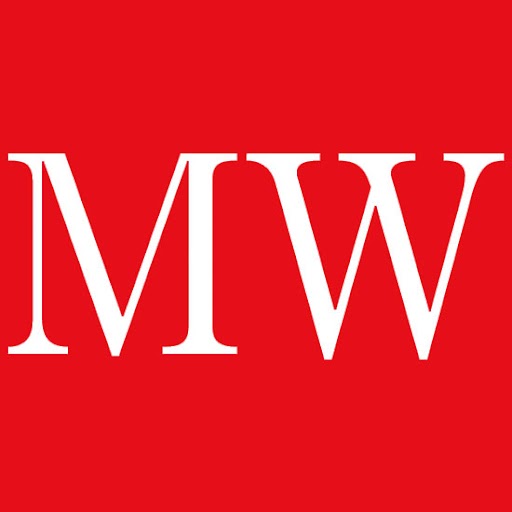What the rising cost of the carry trade means for your investments
Now that central banks in Europe and Japan are raising interest rates, the days of easy money trades look to be over. What do the rising costs of carry mean for asset prices? And, asks Richard Benson of Specialty Finance Group, what does it mean for your investment strategy?
Up until just recently the only bargains in the carry trade were achieved by borrowing at lower interest rates in the euro and yen. This can be risky, though, because of the uncertainty of exchange rates. Below is an example of what I mean:
Say a trader borrows 5,000 yen from a Japanese bank and converts the funds into U.S. dollars. He then purchases a bond for the equivalent amount, and this bond pays 5 percent or more (and the Japanese interest rate is set at 0 percent). Obviously, this trader stands to make a profit of at least 5 percent as long as the exchange rate between the countries does not change. But if the yen strengthens, this trader is easily wiped out.
Many professional traders use this trade because the gains can become very large when leverage is taken into consideration. But if the U.S. dollar continues to fall in value relative to the Japanese yen (as in the example above), traders may become victims of their own greed and fearlessness. Transactions like this use a lot of leverage, so any small movement in exchange rates can result in big losses unless they are hedged appropriately. Surprise! Interest rates are now going up in Europe and Japan and the vast majority of central banks around the world are raising their cost of borrowing. The easy money trades are gone.
MoneyWeek
Subscribe to MoneyWeek today and get your first six magazine issues absolutely FREE

Sign up to Money Morning
Don't miss the latest investment and personal finances news, market analysis, plus money-saving tips with our free twice-daily newsletter
Don't miss the latest investment and personal finances news, market analysis, plus money-saving tips with our free twice-daily newsletter
The rising cost of carry: effect on stock prices
The U.S. financial markets for stocks, bonds and commodities are greatly affected by the willingness of market participants to behave like traders by placing bets. These bets are based on the belief that there will be a continuation of some trend or theme in the market that will ultimately affect stock prices. Contrary to the message from Wall Street professionals who say "stock prices will only go up", I'm placing my bets on a declining dollar, a stormy end to the housing bubble, and a long-term bull market in commodities, particularly precious metals. However, except for owning physical gold and silver, I do not believe it's wise to place bets every day.
Professional traders and investors who speculate by placing bets with borrowed money have two things to worry about: paying the interest on the money they borrowed, and a declining market price for the asset they bought. This interest on the money borrowed is called the "cost of carry" named after the cost of carrying the position.
When the Federal Reserve Bank cut interest rates to 1 percent, the cost of carry was ignored because it was insignificant. (At that time, borrowing money to gamble on stocks, bonds and commodities was virtually free.) Today, with the Fed Funds rate at 5.25 percent and likely to go up, the cost of carry is much higher and most speculators are paying more than the Fed Funds rate! To make money today, they must place bets on assets that are rising faster than interest rates otherwise they'll be eaten alive by the cost of carry.
The rising cost of carry: excess speculation
The second quarter of 2006 (and so far in July) has been painful to anyone who "went long" by buying risky positions: stocks were down, emerging markets were crushed, and commodities had a very severe price correction that is still ongoing. Massive amounts of credit were extended to put on these speculative positions and while some air has deflated out of the credit bubble, there are still hundreds and hundreds of billions of highly-leveraged speculative positions in the markets. To date, only a small amount of the excess speculation has been drained away. Remember, when greedy speculators get carried away, they can literally be carried out of the financial market casino with empty pockets on a stretcher.
Obviously, if the price of an investment is going up, lenders supplying the credit will be willing to advance the interest charge against the increased collateral value. However, if the price of the asset is declining, some of the investment will have to be sold off to pay the interest. The lenders will then start sending out margin calls. Where does one get the cash to pay for the interest charge and any margin call? If you are forced to sell some of your investment just to pay the interest charges, chances are you're not the only one selling. So, if other speculators are selling, who's actually buying and what's going to happen to the price of the asset?
Rumor has it in professional money management circles that only a few speculators actually made money in the second quarter of 2006. If these same speculators shorted their positions instead, they would have generated a positive cash balance that earned interest and made money because the price at which they would have to buy back their short sale would have dropped below the initial price they paid.
The rising cost of carry: investment strategies
The markets are beginning to wise up to the crushing cost of carry. Behaviors are beginning to change. Even managers of mutual funds have noticed that when stock prices are not rising, they can enhance their portfolio yields by increasing their cash position! (What happens when mutual funds are selling and no one is buying?) Commodity speculators on high-leverage have recently noticed they have to be very nimble on the long side and get in and out quickly before they are crushed. Buy and hold strategies are expensive, frequently painful and sometimes career-ending.
With this in mind, you might be wondering what a cautious investor should do? Sometimes the best thing anyone can do is nothing! Yes, be patient and wait! The worldwide rising cost of carry will eventually push down the prices of those assets you truly love! A big correction in the housing market will also adversely affect stocks and commodities, and the housing slide could last a few years!
So, even though opportunities of a lifetime happen every day on Wall Street, don't be persuaded to rush into something today or even tomorrow. Waiting for asset prices to come down to your buy point isn't so bad, particularly when you are paid to wait! Why risk losing money when you can make 5.5 percent on a FDIC insured CD at the bank?
Or, I suppose, you could go to Las Vegas and place your bets. At least there, they let you make up your own mind. On Wall Street, while the house is telling you how to bet and buy stocks, it's not time to roll the dice. Just wait!
Recommended further reading:
For more on how the carry trade works, read: What is the carry trade? Then find out where you should put your money as the carry trade ends. For a full list of articles like this, see our section of strategy tips.
By Richard Benson, President of Specialty Finance Group (www.sfgroup.org).
Get the latest financial news, insights and expert analysis from our award-winning MoneyWeek team, to help you understand what really matters when it comes to your finances.
MoneyWeek is written by a team of experienced and award-winning journalists, plus expert columnists. As well as daily digital news and features, MoneyWeek also publishes a weekly magazine, covering investing and personal finance. From share tips, pensions, gold to practical investment tips - we provide a round-up to help you make money and keep it.
-
 Investors will reap long-term rewards from UK equities
Investors will reap long-term rewards from UK equitiesOpinion Nick Train, portfolio manager, Finsbury Growth & Income Trust, highlights three UK equities where he’d put his money
-
 The graphene revolution is progressing slowly but surely
The graphene revolution is progressing slowly but surelyEnthusiasts thought the discovery that graphene, a form of carbon, could be extracted from graphite would change the world. They might've been early, not wrong.

